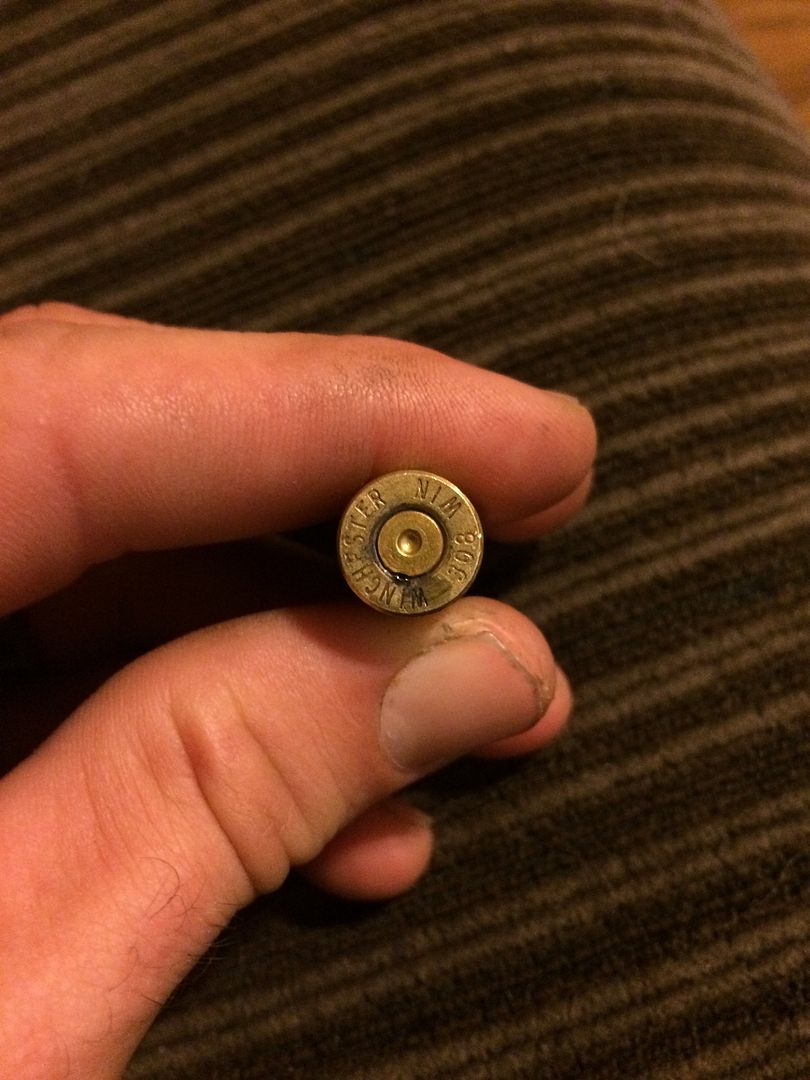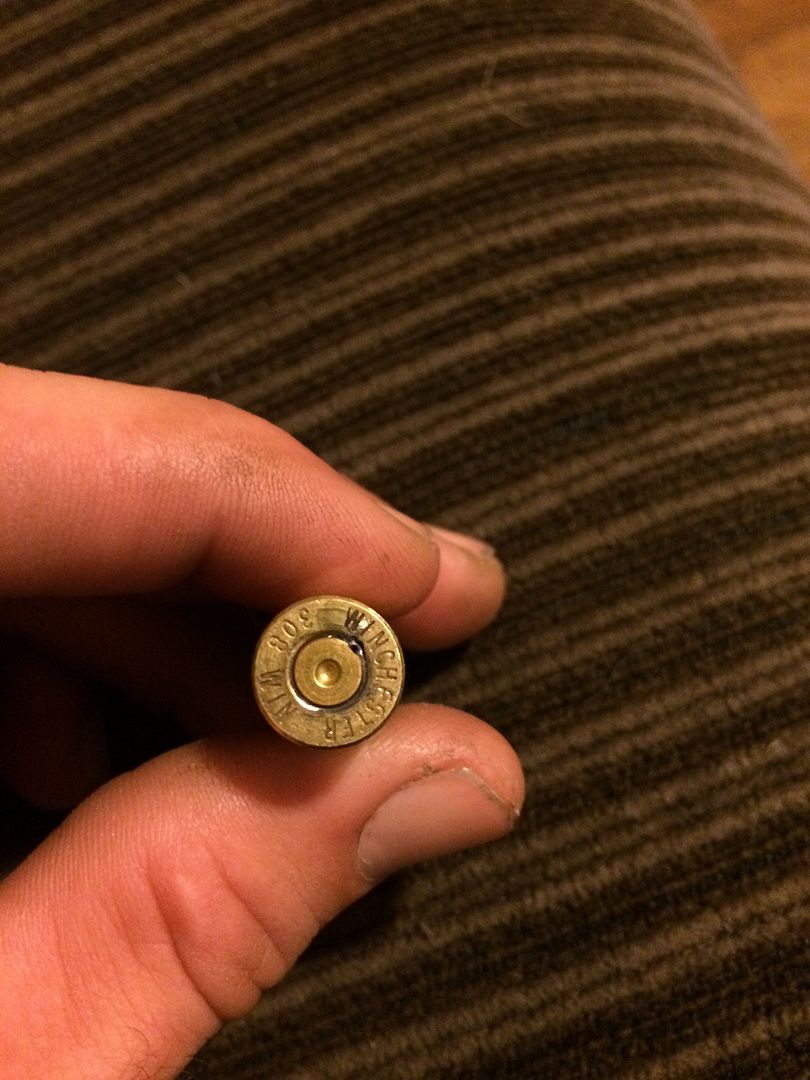The short answer is pressure. The question is why? Your load is below the maximum listed by Hodgdon for either a standard 168 grain bullet or for a Barnes solid, and they develop their loads in Winchester cases. The only difference is, they use the Federal 210M primer, which is slightly milder, though the Winchester is by no means a hot primer. This shouldn't happen.
Where was the hole exactly? Pinholes in primers are not uncommon, but in the bottom of a case head they are pretty much unheard of. It would take a defect in the case to allow that. If you have that, I would contact Winchester about it. Their cases are more generous in capacity than the once-fired military brass, so pressure in them, with a given load, actually tends to be lower.
Now, if it is actually the primer that pierced, my first question is whether it is one of Winchester's brass colored ones? Compared even to the Federal (a soft primer) the unplated Winchesters are soft and pierce more easily. So if this is the case, I suspect the primer and changing to a Federal or other heavier primer may well solve the problem.
The 0.010" additional COL isn't much. It's due to how springy the brass is. Indeed, if you look at
the SAAMI drawing, 2.810" is the maximum length for the cartridge. What I can't tell from that number is how far off the lands your bullet is. It always depends on the bullet shape, though Berger doesn't normally make bullets with a short ogive radius, so I'd be surprised if it was getting too close to the lands. If it did, that will raise pressure.
One of the differences between Winchester brass and some others is that it uses a semi-balloon head. Look down inside and you can see the brass around the flash hole is a little mound. This means the brass around that mound is thinner than on other cases, so it would theoretically take less pressure to pierce. However, the head was designed that way to increase powder capacity, not to lower pressure tolerance. So, again, it shouldn't pierce without a defect being present.



